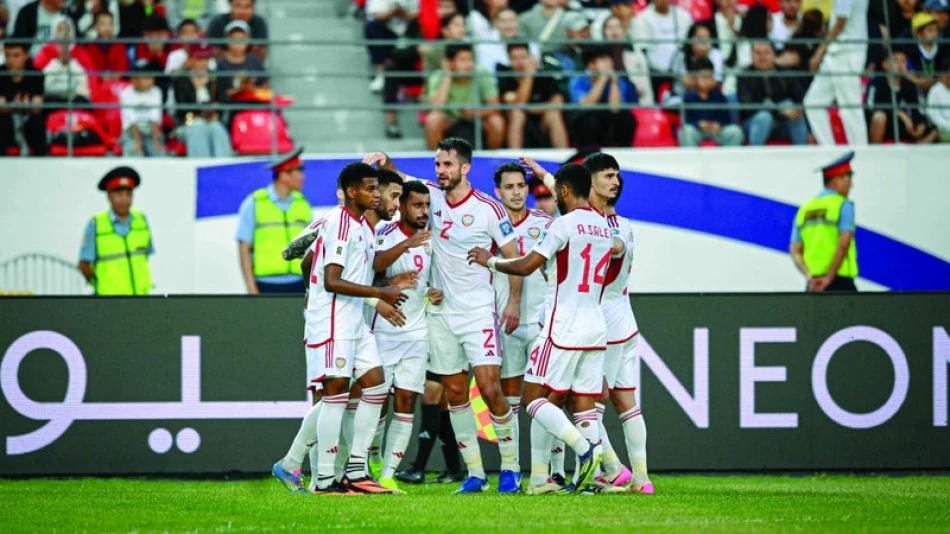
The National Team Discovers its 2026 World Cup Playoff Opponents Today
UAE's Last Stand: Asian World Cup Playoff Draw Sets Stage for Historic Qualification Battle
The UAE national football team faces a crucial moment today as the Asian Football Confederation conducts the playoff draw in Kuala Lumpur, determining the final pathway to the 2026 World Cup. Six nations—including regional powerhouses Qatar and Saudi Arabia—will compete for just two guaranteed spots and one intercontinental playoff berth, making this the most competitive Asian qualification route in recent memory.
High-Stakes Format Creates Narrow Path to Success
The playoff structure leaves little room for error. Six teams will be divided into two groups of three, with only group winners securing direct qualification to the expanded 48-team World Cup. The two runners-up will face each other in a home-and-away playoff in November, with the winner advancing to the intercontinental playoff for one final qualification opportunity.
This format represents a significant departure from previous cycles where multiple Asian teams could secure late qualification through various routes. The 2026 expansion, while adding 16 total spots, has intensified competition within continental confederations as nations recognize the increased global prestige of World Cup participation.
UAE Positioned in Competitive Middle Tier
Based on FIFA rankings from June 13, the UAE finds itself in the second tier alongside Iraq, facing an uphill battle against top-seeded Qatar and Saudi Arabia—both of whom will host matches. The seeding places Oman and Indonesia in the third tier, though recent Asian football has shown that FIFA rankings don't always predict tournament outcomes.
Strategic Implications of Host Nation Advantage
Qatar and Saudi Arabia's hosting rights provide a significant tactical advantage, particularly given the October timing when Gulf temperatures begin to moderate. This mirrors the broader regional trend of using sports infrastructure investments to gain competitive advantages, following the UAE's own successful hosting of major tournaments.
Second World Cup Appearance Within Reach
Under Romanian coach Olario Cosmin, the UAE seeks to end a 36-year World Cup drought dating back to Italia 1990. The team's third-place finish in Group 1—behind Iran and Uzbekistan but ahead of Qatar, Kyrgyzstan, and North Korea—represented a missed opportunity for direct qualification that now forces this high-pressure playoff scenario.
The extended gap highlights the challenges facing traditional Asian football nations as the continent's competitive balance shifts. Countries like Australia, Japan, and South Korea have maintained consistent World Cup presence, while nations like the UAE must navigate increasingly difficult qualification pathways.
European Preparation Signals Serious Intent
The planned training camp in Austria demonstrates the UAE's commitment to maximizing their chances. European preparation camps have become standard practice for Asian teams seeking to adapt to different playing conditions and tactical approaches, particularly when facing diverse regional opponents.
Regional Context and Broader Implications
This playoff represents more than sporting competition—it reflects the Gulf region's ongoing soft power competition through football. With Qatar fresh from hosting the 2022 World Cup and Saudi Arabia securing the 2034 tournament, the UAE's qualification would maintain the nation's regional sporting relevance during a period of intense competition for international attention.
The matches, scheduled for October 8-14, will determine not just World Cup participants but potentially influence regional football development strategies and coaching philosophies across Asia. For the UAE, success would validate their long-term investment in football infrastructure and youth development programs initiated after their last World Cup appearance.
Most Viewed News

 Sara Khaled
Sara Khaled






